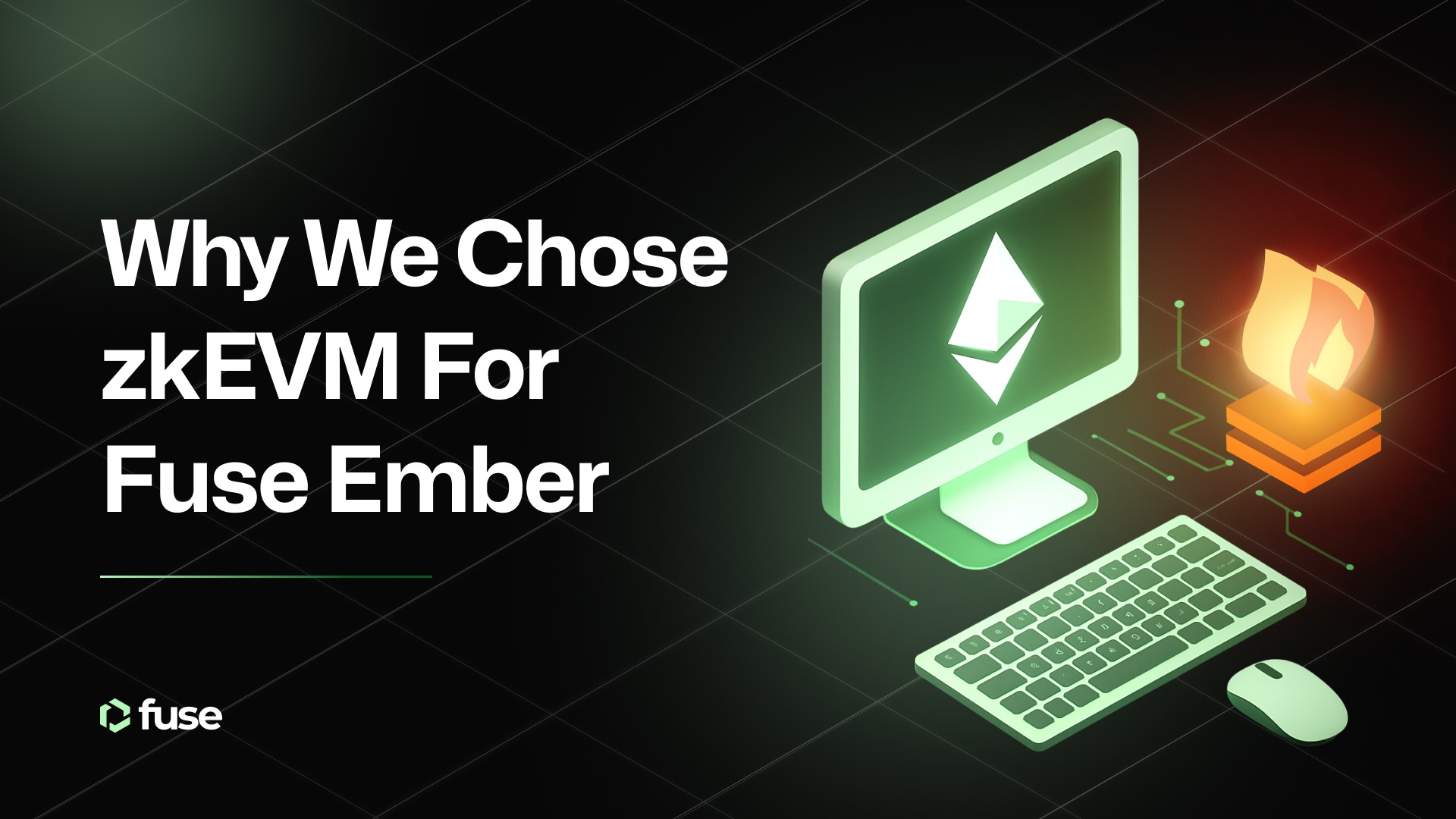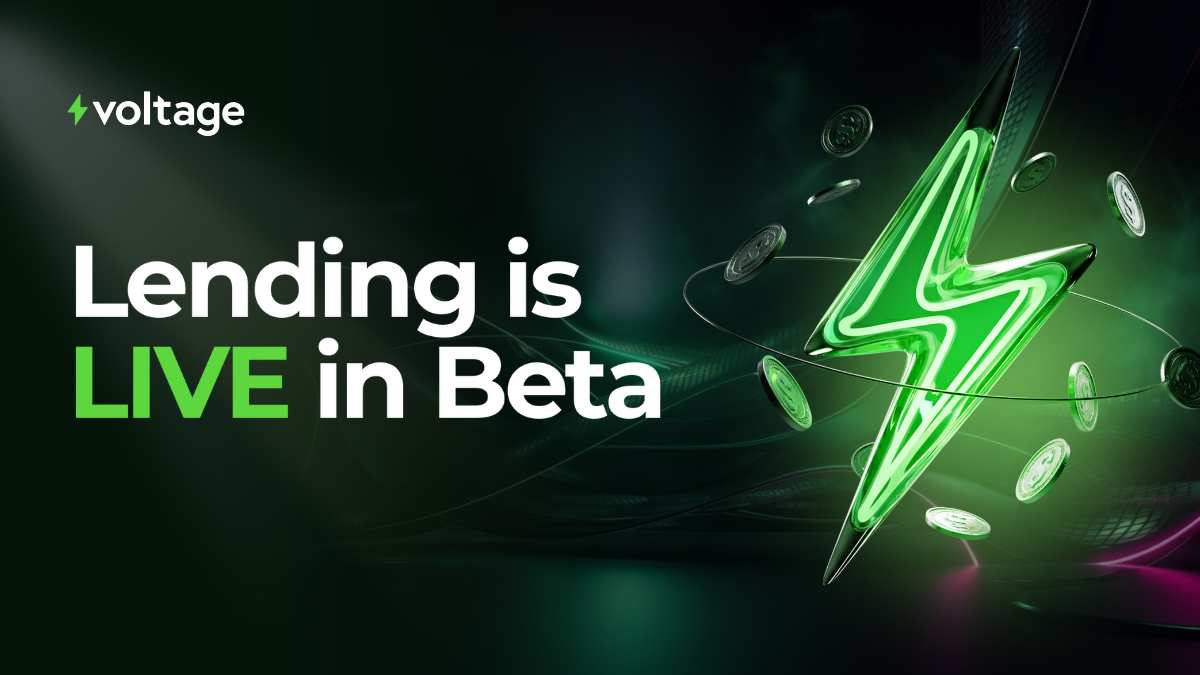The Fuse Network DeFi crash course summarizes the essential aspects of decentralized finance and gives information about how to get started with Web3 and crypto.
Many terms used in the crypto space can be confusing for new entrants. In this guide, we hope to provide a soft landing into the world of DeFi that arms readers with the vital information to take action.
Blockchain technology opens the door to new opportunities for decentralized finance and personal banking. Middlemen and their fees are removed from the equation, and rather than letting banks make the rules, users control their finances and can reap the rewards for doing so.
- What is DeFi or decentralized finance?
- What is Cryptocurrency?
- Understanding DeFi wallets
- What Is a Crypto Wallet Address?
- What is a private key?
- How do decentralized exchanges work?
- What’s an automated market maker (AMM)?
- What is leverage trading?
- What’s a flash loan?
- What’s slippage?
- What is price impact?
- What are stablecoins?
- What does Total Value Locked (TVL) mean?
- What is a liquidity provider?
- What are the best DeFi platforms?
- Why do you pay a fee to swap tokens on a DEX?
- Why are there so many decentralized exchanges?
- How does lending work in DeFi?
- How do I borrow money in DeFi?
What is decentralized finance (DeFi)?
DeFi is short for decentralized finance, an overarching term for various financial services in cryptocurrency or blockchain, focusing on disrupting financial intermediaries. Put more simply, DeFi dapps aim to cut the go-betweens out of everyday financial transactions and give people more power over their finances.
Blockchain technology and, more specifically, smart contract applications (dapps) on Ethereum made DeFi a reality. Blockchain allows several entities to hold a copy of historical transactions, meaning a single, centralized source doesn’t control it.
Gatekeepers potentially limit the speed and complexity of transactions while offering users less direct control over their finances. Intermediaries also charge fees for their role, so when removed from the equation, it leaves more rewards for the actual users of a platform.
What is Cryptocurrency?
A cryptocurrency is a digital or virtual currency secured by cryptography, making it nearly impossible to counterfeit or spend twice. Many cryptocurrencies are decentralized networks based on blockchain technology—a distributed ledger enforced by a disparate network of computers.
One core feature of cryptocurrencies is that they are generally not issued by a central authority, rendering them, to some degree, immune to government interference or manipulation.
Understanding DeFi wallets
A DeFi wallet is a non-custodial wallet that stores a user’s cryptocurrency and digital assets. They are non-custodial, meaning only those with the unique seed phrase or private key can access the funds. Non-custodial wallets are different from those issued by centralized exchanges like Coinbase or Crypto.com, for example.
Those platforms simplify onboarding by creating a wallet for every user but never asking them to store private keys or seed phrases. In return, users of centralized exchanges sacrifice control over their assets, just like with a traditional bank.
However, a significant difference between a bank and a crypto exchange is that deposits to a bank are often regulated and insured by government deposit schemes.
The two types of non-custodial wallets utilized most can be hardware and software wallets. Hardware wallets such as Ledger and Trezor look like USB sticks, and users can store their funds offline, often called cold storage.
Software wallets are online wallets you access through your web browser or phone. Famous examples include Metamask, Trust Wallet, and WalletConnect.
What is a crypto wallet?
A crypto wallet is a software that allows you to hold crypto just like your physical wallets. For example, you can receive money from someone, put it into your wallet, and remove it when you want to make a purchase. You can hold crypto and send and receive crypto payments with your crypto wallet.
Examples of crypto wallets are hardware wallets, a physical storage device that stores private keys, tokens, or cryptos; hardware wallets can be in the form of hard disks or flash drives. The most popular hardware wallets are Ledger Nano S, Exodus, Electrum, and Trezor. A software wallet is a program you install on your computer or a website that allows you to access your wallet; examples of software wallets are MathWallet, MyEtherWallet, and MetaMask.
You cannot fully understand how a crypto wallet works without understanding how centralized exchanges and crypto banks store your crypto. If you decide to buy crypto from a centralized exchange or crypto bank, they will give you a wallet address, but the truth is that they hold your crypto for you, which means that you don’t have direct access to your private key.
The disadvantage of keeping your crypto in a centralized exchange or crypto bank is that you will lose your coins if the exchange goes bankrupt.
What is a crypto wallet address?
A crypto address is the particulars that point to a crypto wallet; with your wallet address, another crypto user can send coins to your address. You can generate your wallet address through your private key if you misplace them.
An address is permanently attached to a crypto wallet; a crypto wallet is a software program that enables you to store your coins. The main difference between conventional bank accounts is that the transaction history of traditional banks is private.
The transaction history of a crypto wallet is public, meaning anyone on the blockchain can access the transaction history of any wallet address. That is one of the reasons that blockchain is unique because blockchain networks are transparent, creating trust among blockchain users.
Crypto wallets have two keys, the private and the public keys. You can use your private keys to access your wallet if you want to confirm payments, send money or check your wallet balance, private keys are meant to be secret, and you should share them with anyone. You can use your public key to generate your address through one-way encryption, which means anyone cannot generate your public key from your wallet address.
One of the things you should know about crypto wallets is that all transactions are irreversible. You should double-check instructions before sending money to other crypto wallets.
What is a private key?
The crypto wallet has two digital keys critical for blockchain for sending and receiving cryptos: public and private. Anyone can access your public key on the blockchain, but someone with access to your private key can steal your crypto.
A private key, a secret key, is a string of alphanumeric characters that allow users to manage their crypto wallets. When tokens are deposited into your public address, it will be impossible for you to access them without your unique private key. Private keys generate public keys through a complicated one-way algorithm which means it is almost impossible to generate private keys from public keys.
How do decentralized exchanges work?
Decentralized exchanges cannot call on centralized money, therefore, rely exclusively on their users. Users can place cryptocurrencies into liquidity pools on decentralized exchanges and receive rewards for providing liquidity.
I.e., the pool of tokens containing ETH and USDC, for example, is big enough to permit a trader to swap a certain amount of ETH for USDC without significant price impact.
In a nutshell, the liquidity on a decentralized exchange is provided by its users. This is why when a new DEX launches, it will incentivize users to provide liquidity with huge percentage rewards and an additional share of the platform’s trading fees if they charge any.
However, this strategy usually leads to an initial rush of users that want to score big rewards then subsequently, they drain their funds leaving the DEX unusable. Many DEXs also have their token to facilitate further rewards and staking options for users.
What’s an automated market maker (AMM)?
An automated market maker, or AMA as they are referred to in the blockchain industry, is a token-swapping tool. Traditional exchanges require buyers, sellers, and a central reserve of assets. In contrast, AMM exchanges secure liquidity from their users and use smart contracts to execute trades.
An AMM is a computer program that enables unstoppable, automated, and decentralized trading using algorithms to price assets in liquidity pools.
Vitalik Buterin initially introduced automated market makers in 2017. They not only massively improved the capabilities of decentralized exchanges, but AMMs have also made it possible for DeFi to exist in its current form.
What is leverage trading?
Most investors trade crypto and other digital assets using the cash or tokens they already have. If they want to buy a token, they must have enough money to pay for it. One of the drawbacks of investing only with your own money is that your financial resources limit your gains.
Even if you find a fantastic investment opportunity that returns 100%, if you only have $500 to invest, you’ll only earn a $500 profit. In the most basic sense, Leverage trading involves borrowing money or increasing the number of tokens involved in a trade beyond the number of tokens you could afford when paying in cash or another crypto.
It’s not bad to trade on leverage if you know what you’re doing and understand the risks. But if that’s not the case, it’s hazardous, and you could lose a lot more than you can afford.
What’s a flash loan?
Flash loans are a new type of unsecured financing available through DeFi platforms. Traders use these loans for various profit-generating strategies, including arbitrage and collateral swaps.
Users must submit collateral to borrow funds in DeFi protocols such as Compound or Maker. Typically, these loans are especially overcollateralized, requiring the borrower to secure assets worth more than the loan. This ensures the user will repay the loan, as there is no such thing as a credit rating in the world of DeFi – at least not yet.
What’s slippage?
Slippage is the difference between the price you expect to get on the crypto you have ordered and the price you get when the order executes. Due to the volatility of cryptocurrency, the price of an asset can often fluctuate depending on trade volume and activity, even within the few minutes a user is executing a trade. The slippage percentage shows how much the price for a specific asset has moved.
What’s the price impact?
Price impact is the influence of a user’s trade over the market price of an underlying asset pair. It is directly correlated with the liquidity in a pool on an exchange. Price impact can be incredibly high for illiquid markets and pairs and may cause a trader to lose a significant portion of their funds. Situations arise where traders could swap a more significant dollar portion of one token for a smaller amount.
Price impact can also be positive if the pool is imbalanced in the opposite direction. Your trade might occur at a discount relative to the pool. This is also known as an arbitrage opportunity.
What are stablecoins?
A stablecoin refers to a cryptocurrency pegged to the price of another currency asset, such as the US dollar, pound, or euro. The value of a stablecoin cryptocurrency does not fluctuate. Instead, it follows the algorithmic peg of its brother currency. Of course, if the peg fails, so does the stablecoin.
The most commonly used are USDT and USDC, pegged to the US dollar. Stablecoins are popular with traders who need to move in and out of trading positions while hedging against specific crypto. Additionally, they can provide holders with lucrative staking and saving opportunities with APYs as high as 5% on certain stablecoins on particular platforms.
Moreover, stablecoins are the best way for DeFi to move forward as a viable everyday payment option, given that their values dont fluctuate and are pegged to fiat currencies. Fuse Network has its stablecoin called Fuse Dollar, or fUSD.
What does Total Value Locked (TVL) mean?
Total value locked (TVL) is the total value of crypto assets deposited in a dapps smart contract – or all dapps, across all blockchains. TVL is often measured and cited on one blockchain specifically, such as Ethereum or Polygon, or used as a total figure spanning all blockchains and DeFi dapps. Therefore there is a big difference between these two headlines:
TVL in Ethereum DeFi rises 150% (Talking about Ethereum specifically)
TVL in DeFi hits $300 billion (Across all tracked blockchains and dapps)
One important nuance is that the figure is often reported in dollars, but as mentioned, it’s captured in cryptocurrency. This means that if the value of the cryptocurrencies within the smart contracts increases, so does the dollar value of TVL – when the amount of crypto has stayed the same.
What is a liquidity provider?
Liquidity providers are investors who place cryptocurrency tokens on DEXs to earn transaction fees, often referred to as liquidity mining or market-making. The rewards vary based on the amount of liquidity available and the number of transactions in the liquidity pool. Liquidity providers are essentially the backbone of the DeFi space, as, without their input, DEX could not perform its essential functions.
What are the best DeFi platforms?
The most successful decentralized exchange to date is Uniswap, with over $7.2 billion in total value locked across its smart contracts. However, Ethereum gas fees have been extremely expensive recently, so some of these dapps are shifting toward independent layer-1 networks like Fuse and layer-two scaling solutions such as Polygon, BNB Chain, Avalanche, and Fantom to lower the trading costs for users.
On these other networks, DEXs such as Voltage, FuseCash, QuickSwap, PancakeSwap, and Sushi have already emerged as leaders in their field. However, the landscape is changing at a lightning pace, so it’s best to stay up to date.

Why do you pay a fee to swap tokens on a DEX?
A DEX makes its revenue from fees, just like any exchange. The core difference is that on a DEX, the fee is written into the smart contract and executes automatically without needing third parties.
For example, the contract will send 0.1% of the traded amount to the exchange’s wallet. Fees are also collected and distributed to liquidity providers to incentivize them to add liquidity in the first place.
This amount is a platform fee and is additional to any gas fees that must be paid to execute a trade on the platform. Notably, some platforms charge zero platform fees. Fuse Network gas fees are under $0.10, compared to anything between $10 and $100 on Ethereum.
Why are there so many decentralized exchanges?
Decentralized exchanges are built in an open-source way, which means that anybody with the development knowledge can come along and essentially fork or copy and paste a leading DEX such as Uniswap code into another dapp, giving it a new name with almost identical functionality.
When a dapp is forked, it complements the original protocol’s design and functionality but can bring about competition in a small space. At writing, Uniswap has been forked more than 220 times. While OlympusDAO has been forked over 100 times since launching.
To succeed with a fork, the developers must add another layer for the user. In the case of SushiSwap, they forked Uniswap but added the Sushi token to reward users for providing liquidity. Something Uniswap wasn’t doing, leading to a vampire attack on Uniswap where liquidity was essentially sucked out and moved to SushiSwap by liquidity providers looking to earn more rewards for their contributions.
How does lending work in DeFi?
Crypto lending refers to decentralized finance allowing investors to lend their cryptocurrencies to different borrowers to get interest payments. Rewards can float between 1% and 20% on various platforms and higher for certain coins. Many platforms specializing in lending crypto also accept stablecoins pegged to the US dollar.
Investors should always look at the finer details of both borrowing and lending services to ensure they can meet the requirements and understand the obligations.
How do I borrow money in DeFi?
Using a DeFi platform, a borrower can take a loan. The lending process is executed from start to finish without intermediaries. A token holder sends tokens they intend to lend into a pool using a smart contract. Once the coins are sent to a smart contract, they become available to other users to borrow. A borrower will often have to provide collateral to secure the loan. Afterward, the smart contract issues tokens, usually the platform’s native token, distributed to the lender as a reward.
Investors should always look at the finer details of both borrowing and lending services to ensure they can meet the requirements and understand the obligations.
.svg)
.svg)











